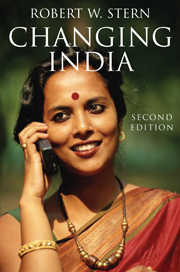Book contents
- Frontmatter
- Contents
- List of maps and tables
- Preface to the second edition
- Glossary
- Introduction: Change, the societies of India and Indian society
- Part I The changing countryside
- Part II Change from above
- Appendix One Major political events in the related histories of British imperialism and Indian nationalism, 1858–1947
- Appendix Two Major political events in the history of the Indian Union, 1947–2002
- Notes
- Guide to further reading
- Index
Introduction: Change, the societies of India and Indian society
Published online by Cambridge University Press: 18 April 2011
- Frontmatter
- Contents
- List of maps and tables
- Preface to the second edition
- Glossary
- Introduction: Change, the societies of India and Indian society
- Part I The changing countryside
- Part II Change from above
- Appendix One Major political events in the related histories of British imperialism and Indian nationalism, 1858–1947
- Appendix Two Major political events in the history of the Indian Union, 1947–2002
- Notes
- Guide to further reading
- Index
Summary
Bourgeois revolution and change
This book is about contemporary Indian society and how it is changing. More than a billion people live in India. Of every six people in the world, one is an Indian. Contemporary Indian society is heir to one of the world's great, enduring and eclectic civilizations. It permeates the entire Indian subcontinent, and its influence is manifest throughout Asia. In contemporary Indian society there are old ways that retain their vibrancy, their credibility and influence, and prevail. But, there are new ways as well: in a lively and well-established parliamentary democracy, a stable quasi-federal republic, programs of social and economic reform, modern agriculture and industry, science and technology, literature and art. In the meetings of old and new ways there are synergies no less than contradictions. Over the past decade or so, India has become an important player in the global economy. An increasingly assertive, nuclear- and missile-armed Indian Union is a major power today in Asia, the Indian Ocean and the world.
So, India is changing. Of course, it has always been changing: only the pace of change has varied from time to time, group to group and locality to locality. This insight of Hindu and Buddhist antiquity is apposite: change is the condition of everything that lives. Change is the condition of social continuity.
- Type
- Chapter
- Information
- Changing IndiaBourgeois Revolution on the Subcontinent, pp. 1 - 32Publisher: Cambridge University PressPrint publication year: 2003



